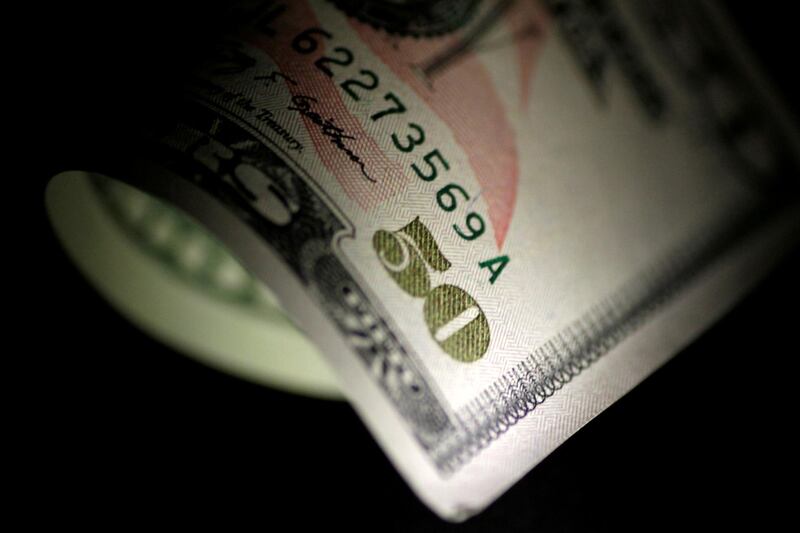The dollar held near a 3-1/2-month high against a basket of currencies on Friday as higher U.S. yields prompted an unwinding of short positions in the currency while the euro was hampered by a dovish tone from the European Central Bank.
The dollar’s index against six major currencies on Thursday hit a high of 91.639, its strongest level since mid-January, as investors have warmed to the greenback thanks to attractive Treasury yields. It last stood at 91.527.
In Japan, the yen was little changed after the central bank’s policy decision at which it kept settings unchanged.
The benchmark 10-year U.S. Treasuries had hit the psychologically important three percent mark on combination of worries about inflation and increased debt supplies as a result of President Donald Trump’s tax cuts and spending plans.
Earlier this year, the correlation between U.S. yields and the dollar had broken down as investors focused more on trade frictions and geopolitical issues, with currencies largely driven by Trump’s tweets than by economic data and yields.
But so far this week, the markets have turned their attention to interest rate plays, pushing concerns over U.S.-China trade on the back burner for now.
In addition, speculators’ net dollar short position in currency futures in Chicago, a closely-watched indicator on market positioning, had hit a 6-1/2-year high, suggesting some short-covering will be due.
“There is an element of positioning unwind underpinning the recent dollar strength... The currencies that had the largest net long positions against the dollar are the ones that have declined the most,” wrote analysts at ANZ wrote.
The euro, in which speculators held record long position, fell to $1.20965 in the previous session, its lowest level since Jan. 12. It last stood at $1.2112, and is down 1.4 per cent on the week.
The common currency slid on Thursday after ECB chief Mario Draghi acknowledged evidence of a “pull-back” from exceptional growth readings seen around the turn of the year, although the central bank sought to bolster expectations for a gradual withdrawal of its monetary stimulus.
The dollar changed hands at 109.17 yen, having risen to a 2-1/2-month high of 109.49 yen earlier in the week. So far this week, it has gained 1.4 per cent.
In the BOJ’s first policy meeting under the new leadership, the central bank dropped a reference to inflation reaching its two percent goal in about two years, however, few see policy implications from this shift in communication.
The yen’s weakness is likely to reflect expectations of yen-selling as drugmaker Takeda Pharmaceutical is pushing to buy London-listed Shire in a $64 billion deal, which would be the biggest Japanese acquisition of a foreign company.
That amount is about twice the size of Japan’s annual trade surplus, although it is not clear how Takeda will finance the deal.
“Given the May 8 deadline of the deal, you would need to be really courageous to go long on the yen until then,” said Yukio Ishizuki, senior strategist at Daiwa Securities.
In contrast, the pound has been relatively well-supported. It last stood at $1.3930, down 0.5 per cent so far this week.
Against the yen, it was fetching 152.14 yen, up 0.9 per cent this week.
Elsewhere, the Australian dollar hit a 4-1/2-month low of $0.7539.





